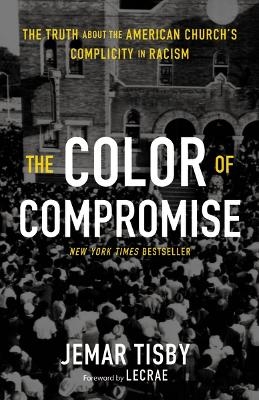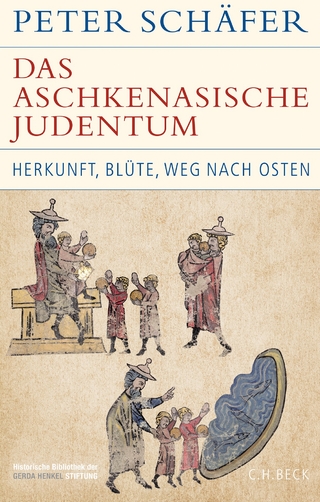
The Color of Compromise
Zondervan (Verlag)
978-0-310-59726-1 (ISBN)
- Titel ist leider vergriffen;
keine Neuauflage - Artikel merken
In August of 1963, Martin Luther King, Jr. delivered his famous "I Have a Dream" speech, calling on all Americans to view others not by the color of their skin but by the content of their character. Yet King included another powerful word, one that is often overlooked. Warning against the "tranquilizing drug of gradualism," King emphasized the fierce urgency of now, the need to resist the status quo and take immediate action.
King's call to action, first issued over fifty years ago, is relevant for the church in America today. Churches remain racially segregated and are largely ineffective in addressing complex racial challenges. In The Color of Compromise, Jemar Tisby takes us back to the root of this injustice in the American church, highlighting the cultural and institutional tables we have to flip in order to bring about progress between black and white people.
Tisby provides a unique survey of American Christianity's racial past, revealing the concrete and chilling ways people of faith have worked against racial justice. Understanding our racial history sets the stage for solutions, but until we understand the depth of the malady we won't fully embrace the aggressive treatment it requires. Given the centuries of Christian compromise with bigotry, believers today must be prepared to tear down old structures and build up new ones. This book provides an in-depth diagnosis for a racially divided American church and suggests ways to foster a more equitable and inclusive environment among God's people.
Jemar Tisby (B.A., University of Notre Dame, Mdiv Reformed Theological Seminary) is the president of The Witness, a Black Christian Collective where he writes about race, religion, politics, and culture. He is also the co-host of the Pass The Mic podcast. He has spoken nation-wide at conferences and his writing has been featured in the Washington Post, CNN, and Vox. Jemar is a PhD student in History at the University of Mississippi studying race, religion, and social movements in the twentieth century.
Introduction
The Color of Compromise uses history to present a jarring picture of how the American church has helped create and maintain racist ideas and practices. In doing so, readers begin to realize just how far back and deep the problem of race and the church goes. But the book doesn’t just look backwards; it looks forward to a future of improved race relations and a more racially inclusive church. But because Christians have worked so hard in the past to divide and separate based on race, believers today will have to work even harder to foster equity and unity. The introduction explains the book’s premise by unpacking its title and its relation to King’s “I Have a Dream” speech where he uses the phrase “the fierce urgency of
now.”
Chapter 1- Making Race: The Colonial Era
In the early years of the European colonization of North America, the racial caste system had not yet been rigidly defined. Indigenous people, Europeans, and Africans ranged from free, to indentured servants, to slaves for life. During this period, white Christians grappled with questions of evangelism. If a person of color
converted to the faith did he or she become an equal? Should slaves who were now Christians be granted freedom? This chapter explores how Christians in America began to excuse racialized slavery and even participated in its formation during the seventeenth century.
Chapter 2- Christian Slave Owners: Antebellum Era
Over time, slavery became increasingly common and regulated in North America. Christians became slave owners and often failed to see the contradiction between their faith and owning people as property. Growing denominations (like Baptists) punted the question of slavery to the civil authorities and nationally known Christian leaders (like Jonathan Edwards) held slaves without apparent contradiction. This chapter details how racism became staples of American Christianity as slavery became an American institution during the late seventeenth and early eighteenth centuries.
Chapter 3- With God on Our Side: The Civil War Era
By the mid-eighteenth century, the nation faced a sectional conflict about the perpetuation of slavery that would end in a bloody war. The Civil War pitted North against South and those who wanted a country that maintained slavery against those who, for various motives, did not. Both Union and Confederate forces thought God was on their side. This chapter explains how Christians in the Confederacy sanctified slavery and tried to make racism sound righteous.
Chapter 4- Taking Back the South: The Lost Cause, Redemption and Jim Crow
After losing the Civil War, white southerners had to find ways to explain their defeat. They couched their plight in theological terms that made their side seem like tragic victims. Although their cause had been just, they had to suffer through the “Lost Cause.” But Christians who wanted a return to white racial dominance
dubbed their crusade “Redemption” as they attempted to return to what they lost. They recast slavery in the form of Jim Crow and used the Bible to defend the inferiority and segregation of black people. This chapter shows how Christians processed the Civil War and adapted their beliefs of racial superiority in the years
from 1865 to 1945.
Chapter 5- On the Wrong Side of the Fight for Equality: The Civil Rights Era
By the middle of the twentieth century, African Americans and their allies became increasingly public with their protests of Jim Crow inequality and brutality. They began boycotting, marching, and rallying for their basic civil rights. Instead of siding with African Americans, however, conservative white Christians resisted their efforts. Both silence and outspoken opposition to these protests characterized Christians in this period. They vigorously obstructed integration and often populated racist organizations like the Ku Klux Klan and the Citizens’ Council. This chapter details the tumultuous Civil Rights era from its rumblings in the 1940
| Erscheinungsdatum | 04.01.2019 |
|---|---|
| Verlagsort | Grand Rapids |
| Sprache | englisch |
| Themenwelt | Geschichte ► Teilgebiete der Geschichte ► Religionsgeschichte |
| Religion / Theologie ► Christentum ► Kirchengeschichte | |
| Religion / Theologie ► Christentum ► Moraltheologie / Sozialethik | |
| ISBN-10 | 0-310-59726-9 / 0310597269 |
| ISBN-13 | 978-0-310-59726-1 / 9780310597261 |
| Zustand | Neuware |
| Haben Sie eine Frage zum Produkt? |
aus dem Bereich


